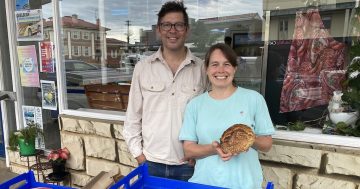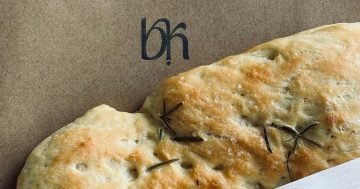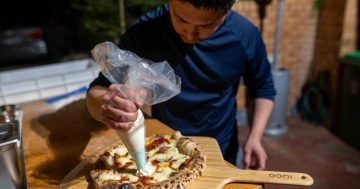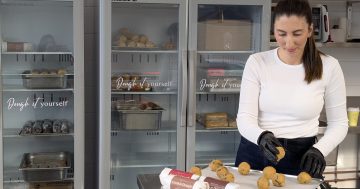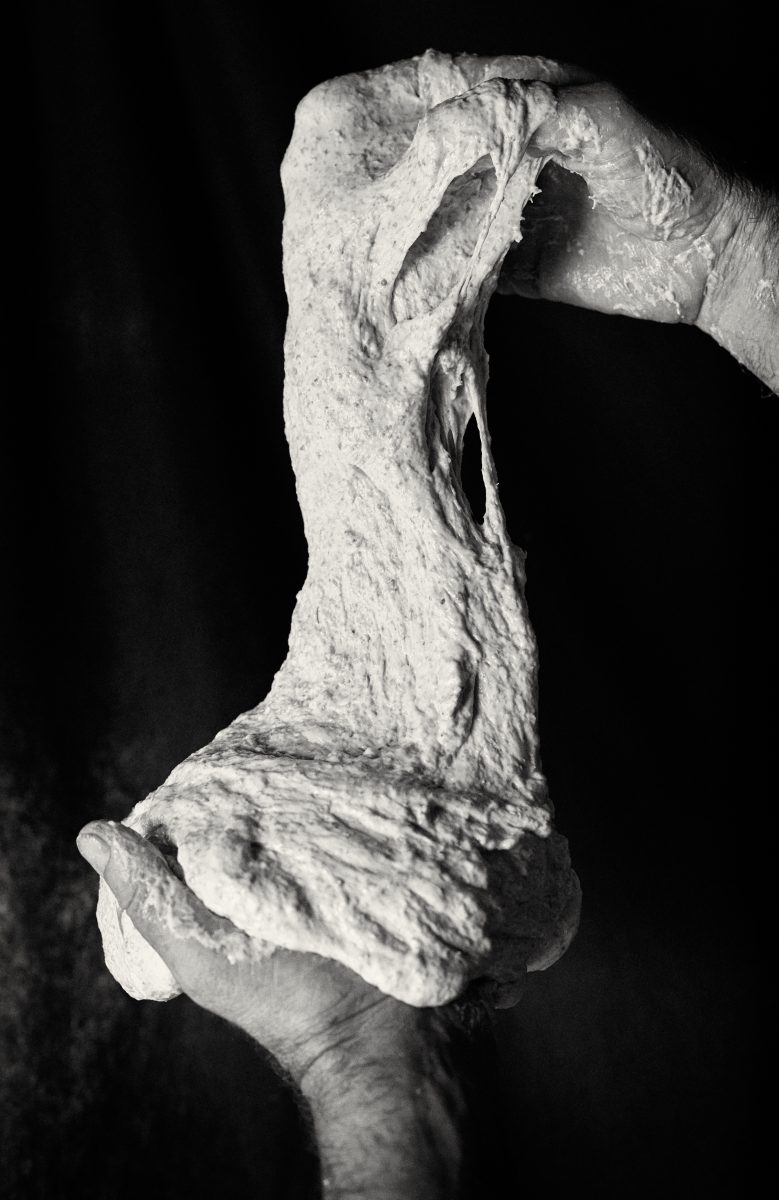
A stretchy, living dough comes from an active sourdough mother. Photos: David Reist.
Bryan Martin is the winery manager at Clonakilla and has been nominated as Winemaker of the Year for his own label, Ravensworth. He’s a food writer, cook and forager who believes Murrumbateman is the Tuscany of Australia.
Wickerhamomyces anomalus aka Pichia amomalus,
Meyerozyma guilliermondii,
Eremothecium sp. and
Kazachstania, both bulderi and humilis…
Sound tasty!
When you spend your life around stuff that ferments, this little list is a true wonder. It’s like listing my children. You can’t pick favourites of course but really, Eremothecium is just that and it’s kinda dangerous in the wrong hands.
This isn’t a list of weird personal fungal communities (and don’t worry, I shower rigorously). This is a short list of inhabitants in the sourdough mother I’ve been living with for well over a decade now.
There’s something wonderful about fermentation, just about all the good things in life are produced by these tiny microbes. Being able to make a living from it is a bonus.
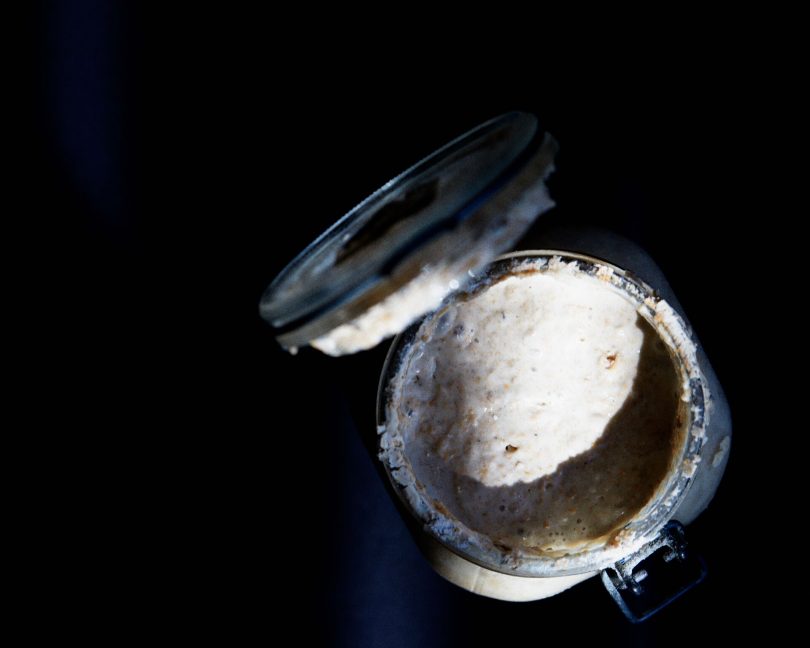
It’s a strange bug to have, that of wanting to bake bread. For me, I can trace it back to living above a bakery at Cremorne in Sydney, hanging out with my dad, watching dough being formed.
It wasn’t so much the act of bread making that I remember, more that the bakers themselves had at best three fingers. This was way before WHS and technology when bakers would scrape the dough away from the sides of the mixer without stopping it. For years I’d always look for severed digits in my super sandwich maker.
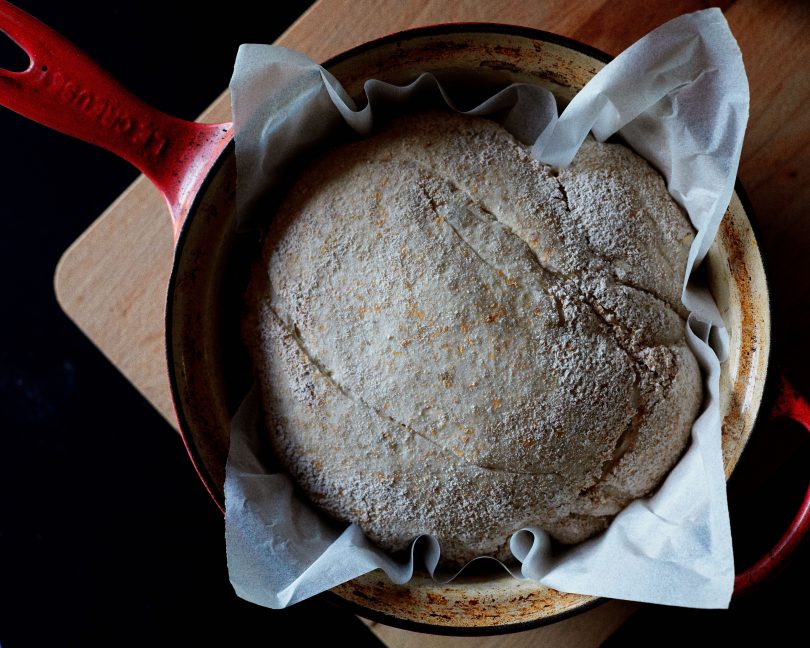
Setting out to create your own yeast culture for bread making isn’t a particularly hard thing to do: yeast and bacteria are literally everywhere. At various stages in my life, I’ve tried and failed, looking at the dead, black mass in the mason jar with a growing sense of frustration.
Having success just required waiting and looking after the scoby until it was ready to make bread. Like waiting for your kids to come good, a yeast culture will get there if you care about it. Go figure?
Here are some tips for those who have tried or wish to try. You can just find someone who has a tried and true mother and make it your own. I will always share my culture, the yeast mother that is: it’s the ultimate gift a person can give, life!
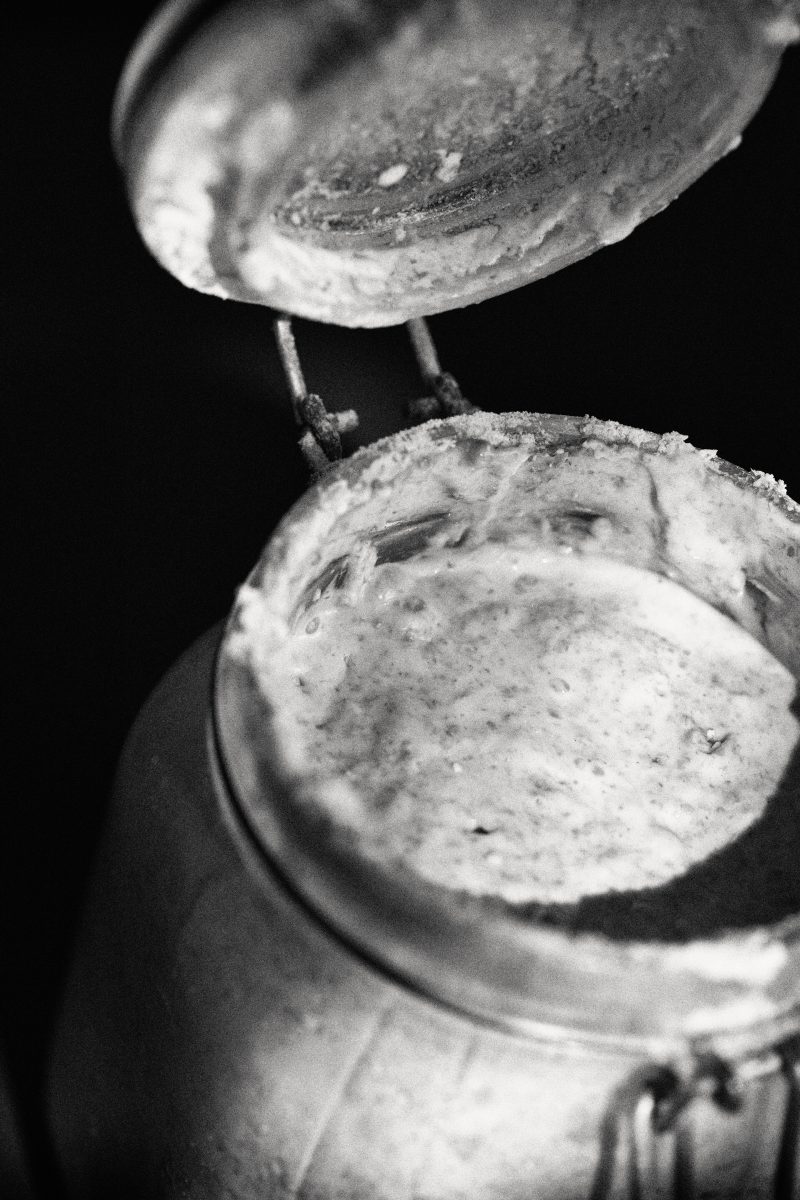
My tips:
Use organic whole-wheat flour to start with. Nothing like residual chemicals to mess up your young fungus’s life.
Use rainwater, or water as we call it in the country. Cities don’t want microbes in the water so it gets treated.
Don’t ever use sugar in the process. Like your kids, if they get a taste for that, it’s all over.
Try and keep packet yeast away from your workplace. These are bred to be dominant, much like us Catholics.
Once fermentation is apparent start getting your yeast used to the fridge. The main way mothers die is being too hot. If they always live in the fridge, you select for a community that can exist and thrive in this environment, like Eskimos would.
A fresh yeast culture is going to take at least a year to be consistent and get that sour character we all love, again patience is a virtue.
Feed at least once a week. Every second day if you can.
I used the technique of Justin Piers Gellatly from St John in London but there are plenty out there. You just use flour and water to make a paste. A good trick is to use rhubarb as an energy and microbial source. Then you wait, once bubbles form you take half away and top up with the 50/50 flour water again. This will take a few weeks and is easier in summer.
Once you have a good ferment, then the fun begins. Like making a mother, baking the loaf is all over the Internet. I’m liking the technique from Tartine in San Francisco. It uses a Dutch oven to bake the loaf and takes about 24 hours to ferment and bake. Look it up, lots of video. I’ve adapted it to my environment and yeast mother.
I can vouch for it as my son, on leaving home, is living in a group house and was pumping out three loaves a week. If an 18-year-old can do it, anyone can. The hardest thing is getting your mother sorted.
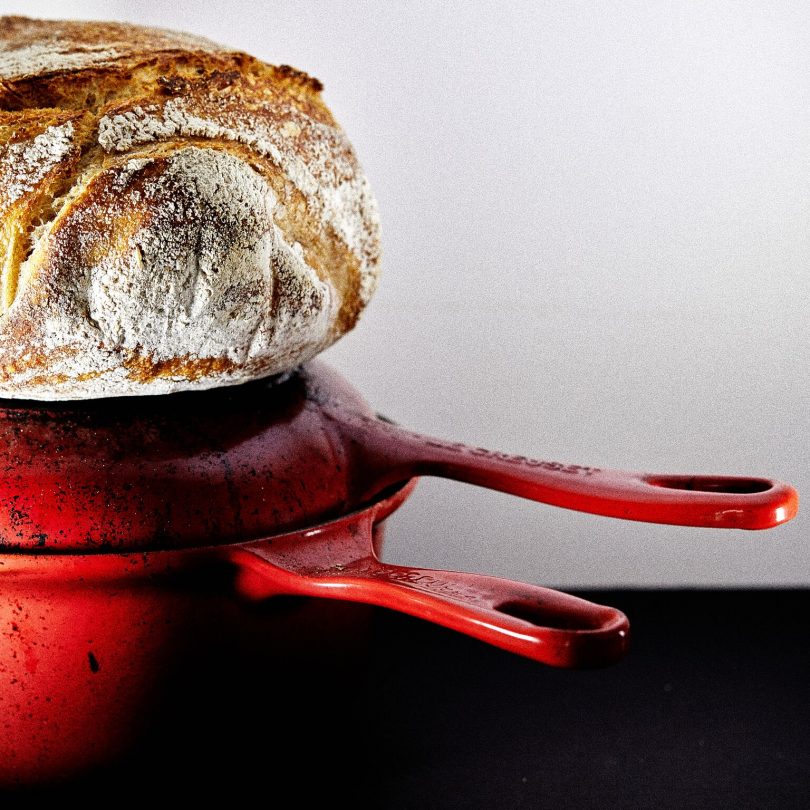
Original Article published by Bryan Martin on the RiotACT.


